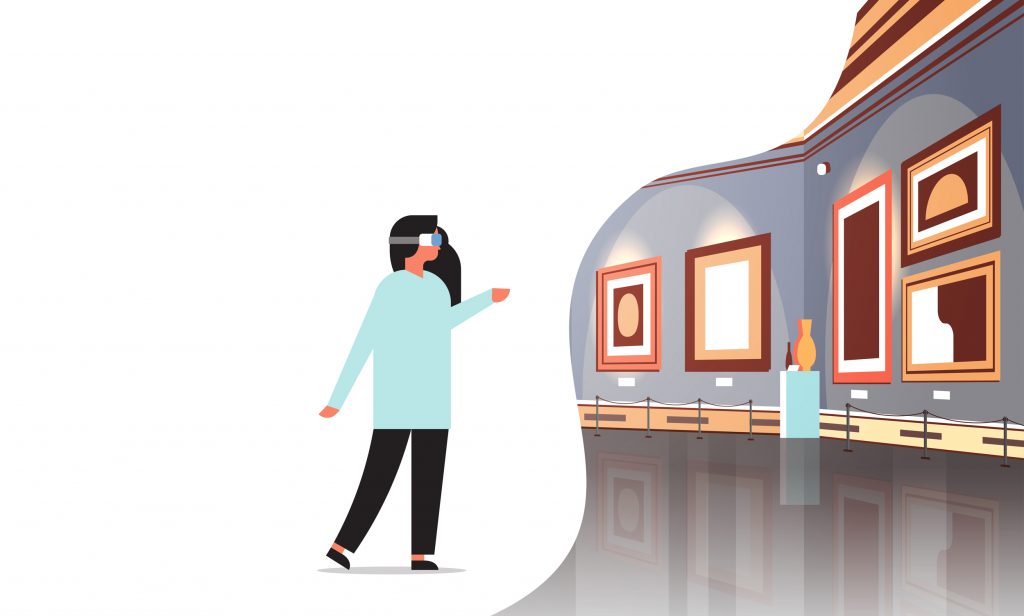Exploring the possibilities and challenges of digital without losing sight of the ultimate goal
In recent weeks, in response to the Coronavirus emergency, awareness of shortening the distance between the visitor and the culture seems to have accelerated.
Smaller museums, spurred on by the need to evolve in order to survive, have reinvented themselves with online and social programs to promote their content through a variety of hashtags(#culturalresistance, #aportechiuse, #cronachedalmuseo chiuso, #culturavirus, …).
The world’s most prestigious galleries, on the other hand, from the Uffizi in Florence to the Vatican Museums, from the Met in New York to the Hermitage in St. Petersburg, have opened up virtual tours.
And it is this last thing that I would like to dwell on.
Can a museum ever be exclusively online?
I regularly work with institutions in order to implement the right technology to better tell the story of collections, attract more visitors, and improve relationships (I discuss this in the second chapter of my book Every Damn Museum).

But when we get to discussing the distribution of online content for the purpose of contributing to the museum’s educational goals, we always end up dwelling on the possible “disruptive” impact (the law of “We’ve always done it this way” still applies in Italy ) instead of taking into account the positive aspects that the technology itself might have.
Let’s look at them in detail.
Storage of objects
For some of the world’s most precious objects, the act of display alone may be too great to be considered ethical. Whether it is light, humidity or temperature, controlling the environment for some historical artifacts is critical and not always compatible with the desire to display it to the public.
The Victoria and Albert Museum in London, is home to the “Ardabil” carpet, which is illuminated for only 10 minutes of every hour to allow visitors to view it without destroying the carpets rich colors and fine textures.
The inclusion of the carpet in the museum’s online collection allows more time to view it, which would never be possible in real life. This limited light for physical visitors, combined with its online presence, allows it to be preserved for future generations to still enjoy today.
Overcrowding of tourists
Strong growth in visitor volume may not be sustainable for many physical places, and although many museums do not yet have a problem with too many visitors (especially small ones), there has been much publicity in recent years about high visitor numbers and places closing to tourists.
These high-volume tourist locations have been forced to change the way they operate for the sake of the places and artifacts that the space is meant to preserve and safeguard for future generations.
In 2018, Machu Pichu, introduced a timed ticketing system that it hoped would alleviate the destruction caused by uncontrolled levels of visitation, sometimes twice the UNESCO-recommended limit for the historic site.
While its impact is still being monitored, it is hoped that the timed ticketing requirement will reduce wear and tear on the historic environment.
Culture fruition
The issue at hand can be viewed from many perspectives. The concept I want to get across is to ensure equality in the enjoyment of museum services that can be used by all people to the greatest extent possible.
You have a duty to share works with as many people as possible, whether they can visit your physical location or not.
The universality of access to culture animated the implementation of Sensi: Museums without Barriers. That project succeeded in 2016 in equipping the first museums of the Museum Network in the province of Belluno with innovative technologies aimed at expanding their accessibility to the public, particularly those with sensory disabilities.
Will an online museum visit ever be an acceptable substitute for a physical visit?

We are in the midst of a process of profound societal change.
On the one hand, visiting virtually any museum or archaeological park online from home or taking a guided tour with a museum curator at will and other connected people from all over the world will be standard.
As a result, a vital part of the museum ecosystem, will be forced in the near future to put as much effort into online content as into physical exhibits.
On the other, these days we are seeing with our own eyes what Italy (and not only) would be like without a museum, without a physical place of meeting and aggregation.
We miss beauty, it is useless to hide it.
Now more than ever we should understand that online can never completely erase the moment of relationship, of contact, of confrontation, of experience, of sociability, that a physical visit can offer.
That is why your goal must remain to
“create a unique and unforgettable experience for the guest.”
This is the only way to generate the word-of-mouth effect so that you can explode visits, online and offline, to your museum.
Loosely based on the article “Is the future of museums online and what might a virtual museum look like?” by Carly Straughan

